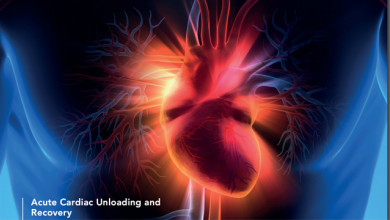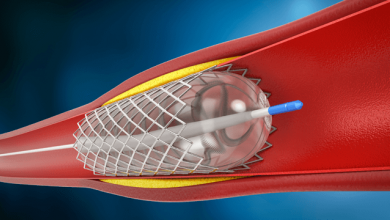Search results
Author(s):
Maurizio Taramasso
,
Christelle Calen
,
Andrea Guidotti
,
et al
Added:
3 years ago
The leading aetiology of tricuspid regurgitation (TR) in developed countries is functional, secondary to left side heart disease and pulmonary hypertension.1 Currently, moderate-to-severe TR affects approximately 1.6 million patients in the United States, of whom only 8,000 undergo tricuspid surgery annually;2 this results in an extremely large number of untreated patients with significant TR, a…
View more
Author(s):
George D Dangas
Added:
2 years ago
In this short video, Dr George Dangas (Mount Sinai Hospital, New York, NY, US) shares the findings from the ENVISAGE-TAVI AF hot line trial presented at ESC Congress 2021.
ENVISAGE-TAVI AF (Daiichi-Sankyo) compared the safety and efficacy of the DOAC edoxaban with VKAs (warfarin and its analogues) in atrial fibrillation patients with an indication for oral anticoagulation after successful TAVI.
…
View more
Author(s):
Kiyotake Ishikawa
Added:
6 years ago
Author(s):
Barbara Stähli
Added:
7 months ago
ESC 2023 — Prof Barbara Stähli (University Hospital Zurich, CH) joins us onsite at ESC 23 to outline the findings of the MULTISTARS AMI Trial (NCT03135275).
MULTISTARS AMI aimed to compare the safety and efficacy of two treatment strategies currently performed in clinical practice, immediate complete revascularization versus staged complete revascularization in patients presenting with ST…
View more
ESC 23: The RIGHT Study
Author(s):
Yan Yan
,
Gilles Montalescot
Added:
7 months ago
Video
Author(s):
Petr Kala
Added:
3 years ago
Patients suffering acute myocardial infarction with ST-segment elevation (STEMI) require full attention of the whole STEMI network to save their lives and to improve the quality of life after a heart attack. Close cooperation among all stakeholders on a national and regional level has to be established. The emergency medical service (EMS) and direct transportation to the 24 hours a day, seven…
View more
Author(s):
Andrejs Erglis
,
Sanda Jegere
,
Inga Narbute
Added:
3 years ago
Intravascular ultrasound (IVUS) is the first catheter-based imaging modality that has been widely used in interventional cardiology.1 It creates cross-sectional images of the vessel lumen and the arterial wall and provides valuable diagnostic information to angiography regarding lumen and vessel measurements and plaque morphology. This information helps clinical decision-making in ambiguous…
View more
Author(s):
Ramón Luengo-Fernández
Added:
7 months ago
ESC 2023 — Dr Ramón Luengo-Fernández (University of Oxford, UK) joins us on-site to discuss the findings from a registry which aimed to analyse the economic burden of cardiovascular disease within the EU.
This was the first study to utilise Europe-wide patient registries and included the costs of long-term social care. Results from the registry found that cardiovascular disease cost the EU €282…
View more
Author(s):
Kimberly Atianzar
,
Ming Zhang
,
Zachary Newhart
,
et al
Added:
3 years ago
In patients with heart failure and reduced left ventricular ejection fraction (LVEF), secondary (functional) mitral regurgitation, in which the mitral valve leaflets and chordae are essentially normal, is the result of functional and structural alterations of the left ventricle (LV). Severe secondary mitral regurgitation (MR) is a predictor of poor clinical outcomes in this patient population due…
View more
Author(s):
Giulia Magnani
,
Marco Valgimigli
Added:
3 years ago
Dual antiplatelet therapy (DAPT), defined as the use of a P2Y12 receptor inhibitor (clopidogrel, ticagrelor or prasugrel) and aspirin, is required after percutaneous coronary intervention (PCI) with drug-eluting stents (DES).1 Although the use of DES has been shown to reduce the rate of restenosis as compared with bare-metal stents (BMS), there is concern that DES may be associated with a higher…
View more

















 « First
« First